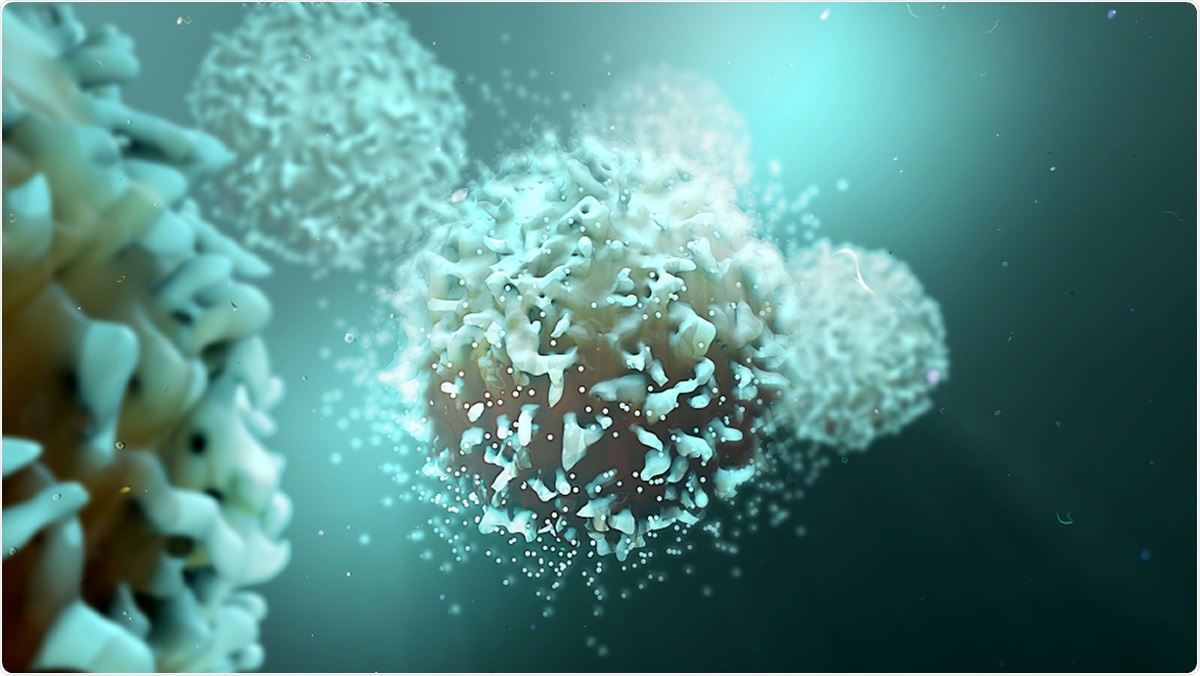A recent study demonstrates that functional CD4+ and CD8+ T cells specifically targeting the entire proteome of severe acute respiratory syndrome coronavirus 2 (SARS-CoV-2) remain active in individuals who have recovered from severe or mild coronavirus disease 2019 (COVID-19). Moreover, the magnitude of T cell response is correlated with the antibody response. The study is published in the journal Nature Immunology.
In the human immune system, CD4+ and CD8+ T cells play essential roles in subsiding acute pathogenic infection and triggering adaptive immune responses against reinfection. For the effective development of immunotherapies or vaccines against SARS-CoV-2, it is vital to determine the specificity, robustness, and durability of T cells developed following viral infection.
In the current study, the scientists utilized interferon-γ-based assays with peptides spanning multiple regions of SARS-CoV-2 to characterize circulating CD4+ and CD8+ T cells explicitly developed against SARS-CoV-2 in individuals who have recovered from severe or mild COVID-19.

Comprehensive mapping reveals that functional CD4+ and CD8+ T cells targeting multiple regions of SARS-CoV-2 are maintained in the resolution phase of both mild and severe COVID-19, and their magnitude correlates with the antibody response.
Study design
The scientists used overlapping peptides spanning the entire viral proteome to effectively characterized the SARS-CoV-2 regions that are recognized by T cells. Only the large ORF-1 region was excluded from the study. Firstly, the overall screening of antiviral responses was performed using interferon-γ-ELISpot assay; afterward, intracellular cytokine staining was performed to determine the functionality and specificity of SARS-CoV-2-specific CD4+ and CD8+ T cells. The most important observation made by the scientist is that SARS-CoV-2-specific immune responses are much broader than that observed in the case of SARS-CoV-1, in which the majority of T cells are directed against the viral spike protein.
Specific observations
The scientists observed a strong and broad CD4+ and CD8+ T cell response against both structural and non-structural proteins of SARS-CoV-2 in almost all recovered individuals. Compared to those with mild COVID-19, the magnitude and breadth of overall T cell responses were significantly higher in people with severe COVID-19. However, the proportions of SARS-CoV-2-specific CD8+ T cells were higher in mild cases compared to CD4+ T cells, and the frequency of cytokine production was higher for matrix- and nucleoprotein-specific CD8+ T cells. Taken together, the identification of specific and robust T cell responses in both mild and severe cases provide evidence of protective immunity. Moreover, the study findings suggest that non-spike viral proteins should also be taken into consideration while developing therapeutics or vaccines.
Comparatively higher T cell response observed in severe cases was predominantly mediated by CD4+ T cells, and the response was mostly directed against the viral spike protein. Interestingly, the scientists noticed that T cell responses against the viral spike protein correlated with the spike-specific antibody responses. This observation might be attributable to CD4+ T cells, as these cells are vital for inducing high-affinity, class-switched antibody responses, long-lived plasma cells, and memory B cells. An increased CD4+ T cell response in severe COVID-19 cases might be because of a higher viral load that triggers more robust immune responses.
The scientists observed strong dominant T cell responses that are specifically directed to matrix (32–47%) and nucleoprotein (35%). The proportion of cytokine-producing matrix/nucleoprotein-specific T cells was higher in mild cases compared to spike-specific CD8+ T cells. These findings reinforce the idea that non-spike proteins, such as matrix and nucleoprotein, could be potential targets for developing vaccines against SARS-CoV-2.
Although there is evidence regarding the pre-existence of cross-reactive T cells in COVID-19 patients that can recognize and eliminate SARS-CoV-2, no SARS-CoV-2-cross reactive T cell population was observed in healthy individuals enrolled in the current study. This difference may be due to variations in assay sensitivity, exclusion of ORF-1 peptides, or differences in exposure levels of individuals to seasonal coronaviruses.
Moreover, the study investigated T cell-mediated immune responses in peripheral blood mononuclear cells, which may not be reflecting the exact characteristics of T cells found at the site of infection, such as the respiratory tract. According to the researchers, more studies are required to evaluate the relationship between tissue-resident memory T cells and disease severity.
Virus-specific T cells can directly or indirectly trigger pathogenic responses while mediating antiviral immune response, facilitating antibody-mediated immune response, and eliminating virus-infected cells. Because T cells can only recognize viral peptides presented by virus-infected cells, T cell-mediated immune responses cannot provide first-line of protection against viral reinfection. However, memory T cells are very effective in eliminating infected cells that successfully bypass the first line of defense provided by antibodies. Thus, the SARS-CoV-2-specific T cell response observed in this study provides a promising outlook on protection against deadly SARS-CoV-2.